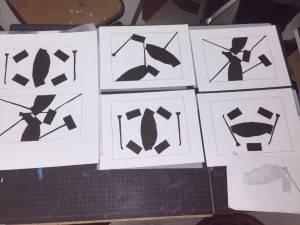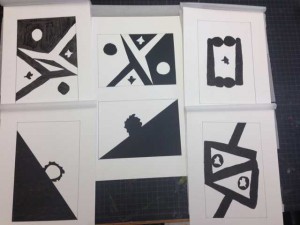Doing this Urban Artifact project, it was something new. I didn’t know what stable or ambiguous was. From this project, I learned about what ambiguous figures and stable figures were and how I can make these two figures using the objects we found outside on the streets. What I could have done better in this project was spending more time in sketching the stable figures. I kind of had a hard time with the stable figure and figuring out if the sketches looked like they were stable. But from critiquing, I got a lot of helpful feedback on my project on how I can make it better. From what I learned about ambiguous and stable figures, I would be able to use those techniques and ideas in the next project we have.
Day: September 26, 2015
City Limits Summary
“City Limits” is the first chapter in Colson Whitehead’s novel “The Colossus of New York”. Throughout the chapter, the author uses point of views such as first and second person to show the different perspectives of city life in New York. From a first person point of view, the author gives the experiences he encountered while being in New York. His “New York” started when he was looking out the window of the No.1 train as the train elevated from the underground tunnel to the tracks above 125th street. From a second person point of view, Whitehead gives many scenarios to a person’s life in New York City. With examples such as “Maybe you came here for school”,”Maybe you saw the brochure”, “Or maybe you moved here a couple years ago for a job”. Through each individual’s recollection of memories and experiences it’s their “New York”. Although we all live in the same city, Whitehead implies that ” The New York City you live in is not my New York City: how could it be?”. New York City is always changing with adding new accommodations to replace the old ones which someone may have experienced. Whitehead mentions that ” The disappeared pizza parlor is still here because you are here, and when the beauty parlor replaces the travel agency, the gentleman will still have his vacation. And that lady will have her manicure”. That individual’s New York has been changed but they still have the memory of that old piece of New York they lived through. While that person’s New York experienced may have been changed it might be a new experience for someone else. Whitehead’s idea of a New Yorker is someone who has an attachment to the memory they had while being in the city. New Yorkers unite by their unique experiences whether that other person may or may not have experienced it themselves.
Hokum
noun
- : foolish or untrue words or ideas.
- : writing, music, etc., that is too dramatic or sentimental and not very original.
Source:http://www.merriam-webster.com/dictionary/hokum
I’ve come across this word in the reading excerpt “City Limits”. This word can be found in the sentence “That Canal Street used to be a canal. That Bryant Park used to be a reservoir. It’s all hokum”. The following sentence says “I’ve been to Canal Street before and the only time I ever saw a river flow through it was during the last water-main explosion”. In this context the word hokum means untrue words or ideas. From learning what hokum means, I understand that statements about Canal Street and Bryant Park are untrue. The author, Colson Whitehead, mentioned before that “History books and public television documentaries are always trying to tell you all sorts of “facts” about New York”. Whitehead mentions later on in the text “Never listen to what people tell you about old New York, because if you didn’t witness it, it is not a part of your New York and might as well be Jersey”.
Urban Artifact: Phase 4
From this project, I have learned two different figure, stable and ambiguous figure-grand. My favorite part of this project is using the exacto knife to cut off the shape I want, although my desk was scratched, but its still a very nice experience. From the beginning to the end of the project, I have changed many details on my creations from phase to phase, I thought I could make them better. Indeed, I did make them better but I lost the concept of the words. I thought if I make the image simple enough and clear, it will be a stable figure, but stable figure have an imbalance of figure and ground (70/30), wherein the ground “supports” or surrounds the figure. This is what I have done wrong. And I hope in the next project I can clearly understand and memorize this little details.




